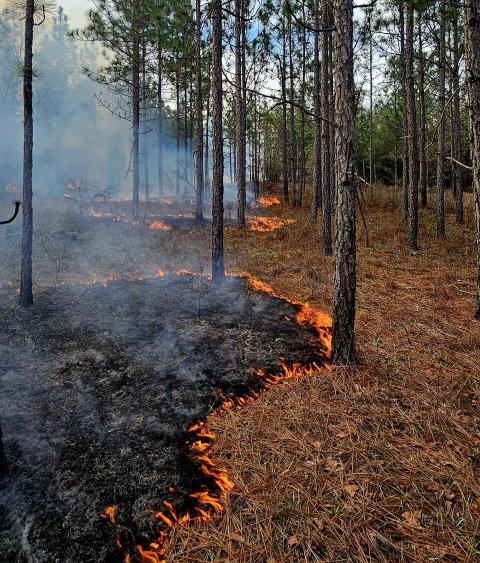Conservation Brief
BLM Finalizes Policy to Streamline Pinyon/Juniper and Salvage Timber Projects
The Bureau of Land Management (BLM) announced on December 9 that it had finalized a categorical exclusion under the National Environmental Policy Act to streamline review of timber salvage projects and projects to remove pinyon pine and juniper encroaching into sagebrush habitat.
The categorical exclusion for pinyon-juniper removal would increase flexibility for projects up to 10,000 acres in sagebrush-steppe habitat. These projects have proven to be effective in restoring habitat for sage grouse and mule deer in the West, as well as to address fire risk. It is estimated that historically there were about 7 million acres of pinyon-juniper woodlands prior to settlement of the West in the 1870s, however they now occupy over 74 million acres and sagebrush ecosystems have been reduced by almost one-half of historical distribution.
“The removal of encroaching pinyon pine and juniper into sagebrush habitat has proven to significantly improve habitat for mule deer and other wildlife,” said Miles Moretti, President/CEO of the Mule Deer Foundation. “In addition, the ability to move quickly after wildfires can be the difference in successful restoration of big-game winter ranges and other important wildlife habitats. The judicious use of categorical exclusions can reduce the amount of time for project implementation and jump start recovery.”
Salvage timber operations on BLM lands would also be streamlined through the new categorical exclusion. The BLM used U.S. Forest Service aerial detection data from 2008 to 2017 and estimates that there are nearly two million acres of forest mortality due to wildfires, insects, or diseases. The streamlined regulations address routine timber salvage timber projects smaller than 3,000 acres; salvage operations excluded from environmental review were previously limited to 250 acres. The expanded categorical exclusion increases the agency’s flexibility to harvest more salvageable timber before it loses market value and before it becomes fuel for future fires.
The agency states: “The BLM has completed a review of scientific literature and previously analyzed and implemented actions and found that salvage harvest at the levels proposed would have a positive effect on reducing fire severity. Removing dead and dying trees and active forest management can accelerate forest development and benefit native wildlife species that rely on early successional habitat, while reducing the potential for catastrophic wildfires. Additionally, the agency found that removing encroaching pinyon pine and juniper vegetation from areas of up to 10,000 acres using the covered actions has no significant effects. Reducing pinyon pine and juniper density/cover in areas of their expansion improves and increases native plant communities. Current literature shows that the native plant communities re-establish after mechanical pinyon pine and juniper tree removal treatments, becoming dominant (over non-native species) either immediately after treatment or within a few years.”



